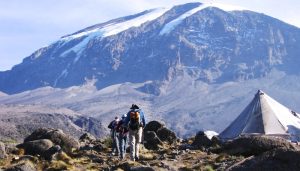The Hazards of Climbing Kilimanjaro: A Comprehensive Guide
Climbing Mount Kilimanjaro is a dream for many adventure enthusiasts, with its towering peak standing as the highest in Africa. However, the journey to the summit is not without its dangers and risks. It is important for climbers to be aware of these hazards and take necessary precautions to ensure a safe and successful ascent.
Dangers and Risks of Climbing Kilimanjaro
One of the main hazards of climbing Kilimanjaro is altitude sickness. As climbers ascend to higher altitudes, the air becomes thinner and oxygen levels decrease. This can lead to symptoms such as headaches, dizziness, nausea, and fatigue. In severe cases, altitude sickness can be life-threatening, so it is crucial for climbers to acclimatize properly and listen to their bodies.
Another risk on Kilimanjaro is extreme weather conditions. The mountain’s high elevation can result in rapidly changing weather patterns, including heavy snowfall, strong winds, and freezing temperatures. Climbers must be prepared for these conditions and have appropriate clothing and gear to stay warm and dry.
Physical exertion is also a factor to consider when climbing Kilimanjaro. The trek to the summit is challenging and requires a good level of fitness. Climbers should be prepared for long days of hiking and be aware of the potential for fatigue and muscle soreness.
Finally, there is the risk of falls and accidents on the mountain. The terrain can be uneven and rocky, making it easy to trip or lose footing. Climbers should take care when navigating the trails and use trekking poles for added stability.
Precautions and Safety Measures to Consider
To minimize the risks associated with climbing Kilimanjaro, there are several precautions and safety measures that climbers should take into account:
-
Choose a reputable tour operator: It is important to book your climb through a reputable and experienced tour operator, such as Sunset Africa Safari. They will provide trained guides, porters, and a well-planned itinerary to ensure a safe and successful ascent.
-
Acclimatize properly: Take your time to acclimatize to the altitude by following a gradual ascent schedule. Stay hydrated, eat well, and listen to your body for any signs of altitude sickness.
-
Pack appropriate gear: Make sure to pack warm and waterproof clothing, sturdy hiking boots, a good quality sleeping bag, and other essential gear for the climb. Check with your tour operator for a comprehensive packing list.
-
Follow the guidance of your guides: Your guides are experienced in leading climbs on Kilimanjaro and will provide valuable advice on pacing, rest breaks, and safety precautions. Listen to their instructions and communicate any concerns you may have.
By being aware of the hazards of climbing Kilimanjaro and taking the necessary precautions, climbers can increase their chances of a safe and successful summit. For those interested in booking a climb with Sunset Africa Safari, please contact info@sunsetafricasafari.com for more information and booking requests.


